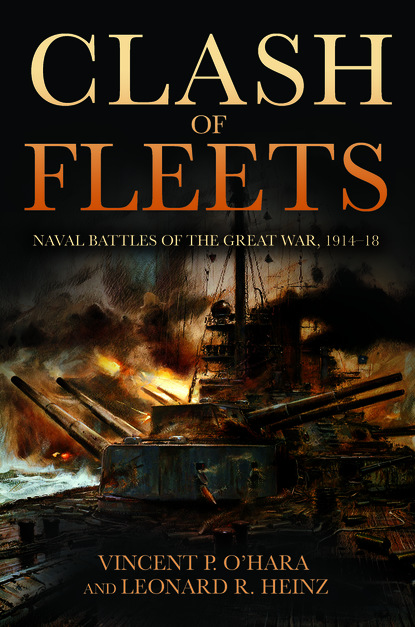
Clash of Fleets скачать fb2
Vincent P. O'Hara - Clash of Fleets краткое содержание
Struggle at Sea is an operational history that records every naval engagement fought between major surface warships during the First World War. The book is organized into seven major chapters. The first introduces the technology, the weapons, the ships, and the doctrine that governed naval warfare in 1914. The next five chapters treat each year of the war and are subdivided into sections corresponding to major geographic areas. The elements of these geographic chapters are the battles themselves. This organization allows the massive sweep of action to be presented in a structured and easy to follow format. The book includes engagements fought by the Austro-Hungarian, British, French, German, Ottoman, and Russian Navies and covers actions fought in the Adriatic, Aegean, Baltic, Black, and North Seas as well as the Atlantic, India, and Pacific Oceans. A conclusion analyzes and summarizes the role of surface combat in the Great War and compares these actions to those fought in the major naval wars before and after.<p>Struggle at Sea is concerned with the questions of why battles occurred; how the different navies fought, and how combat advanced doctrine and affected the development and application of technology. Certain key or interesting battles are described in greater detail to give better insight into the period’s naval warfare. Moreover, every battle is placed in context. The result is a holistic overview of the war at sea as it affected all nations and all theaters of war. A work with this content and format has never been produced.<p>In addition to providing detailed descriptions of actions and setting them in their historical contexts, the book develops several themes. It shows that World War One was a war of navies as much as a war of armies. The Entente Powers would have lost the war had they lost control of the sea, while the Central Powers faced slow strangulation due to the Entente naval blockade. It shows that surface combat and the ability to impose surface combat power had a major impact on all aspects of the naval war and on the course of the war in general. This work also shows that systems developed in peace do not always work as expected; that some are not used as anticipated; and that others became unexpectedly important. There is much for today’s naval professional to consider in the naval conflict that occurred one hundred years ago.
Скачать книгу «Clash of Fleets» Vincent P. O'Hara
Чтобы оставить свою оценку и/или комментарий, Вам нужно войти под своей учетной записью или зарегистрироваться




